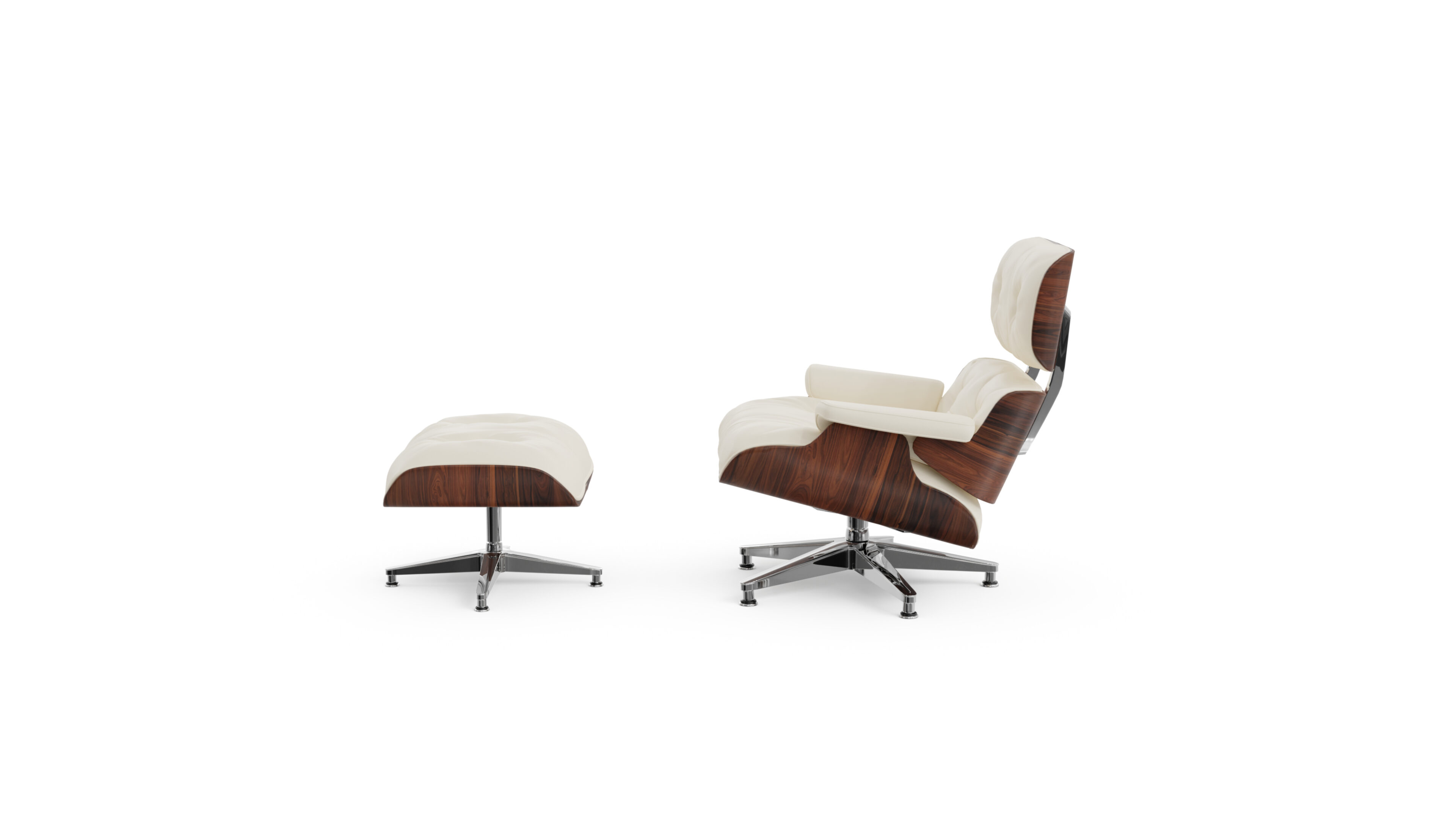
Ico Parisi Biography
Ico Parisi (1916-1996) was an Italian architect and designer who significantly shaped post-war Italian modernism. He began his career after studying architecture in Como, Italy. Parisi is renowned for his innovative integration of architecture and furniture design. His furniture, including the Olimpino Table (1955), employs architectural principles with precise lines, industrial and natural materials, with refined proportions. Parisi’s architectural works include Casa Fraccaroli and Chiesa di Santa Maria Annunciata, which embody his “La Sintesi delle Arti” approach. They integrate architecture, interior design, and custom furniture into cohesive, harmonious environments. His designs continue to influence Italian and global aesthetics today.
Early Life and Education
Born in 1916 in Palermo, Sicily, Ico Parisi moved to Como in northern Italy at a young age. It was in Como that he would spend most of his life and career. Parisi’s formal education in architecture took place in Como, where he studied under notable Italian rationalist architects. This education laid the foundation for his unique approach to design, which would seamlessly blend architecture, interior design, and furniture creation.
Career and Achievements
Parisi’s career began in the 1930s when he started working at the design studio of Giuseppe Terragni, a pioneer of the Italian rationalist movement. This early experience significantly influenced Parisi’s design philosophy. In 1945, he opened his own design studio, “La Ruota,” with his wife, Luisa Aiani, also a talented designer.
Throughout the 1950s and 1960s, Parisi’s career flourished. He became known for his furniture designs, which were produced by renowned Italian manufacturers such as Cassina, MIM, and Altamira. His architectural projects, including residential homes and religious buildings, further cemented his reputation as a versatile and innovative designer.
One of Parisi’s most significant contributions to design was his concept of “La Sintesi delle Arti” (The Synthesis of the Arts). This approach advocated for a holistic integration of architecture, interior design, and custom furniture, creating cohesive and harmonious living environments. This philosophy is evident in projects like Casa Fraccaroli and the Chiesa di Santa Maria Annunciata.
Signature Designs
Ico Parisi’s portfolio includes a wide range of designs that showcase his versatility and innovative approach. Some of his most notable works include:
1. Olimpino Table (1955): A dining table that exemplifies Parisi’s architectural approach to furniture design, featuring precise lines and refined proportions.
2. Model 813 Uovo Chair (1951): An egg-shaped armchair that combines comfort with sculptural form.
3. Casa Fraccaroli (1955): A residential project in Como that embodies Parisi’s “La Sintesi delle Arti” approach.
4. Chiesa di Santa Maria Annunciata (1961): A church in Lipomo that showcases Parisi’s ability to integrate architecture with custom-designed interior elements.
5. Model 896 Lounge Chair (1955): A sleek and comfortable lounge chair that epitomizes mid-century Italian design.
Design Philosophy and Approach
Parisi’s design philosophy was deeply rooted in the idea of integration. He believed that architecture, interior design, and furniture should work together harmoniously to create cohesive living spaces. This holistic approach, which he termed “La Sintesi delle Arti,” set him apart from many of his contemporaries.
In his furniture designs, Parisi often employed architectural principles. He used precise lines, carefully considered proportions, and a mix of industrial and natural materials. This approach resulted in pieces that were not just functional, but also sculptural and visually striking.
Parisi was also known for his innovative use of materials. He often combined traditional materials like wood with more modern elements such as metal and glass, creating pieces that were both timeless and forward-looking.
Legacy and Influence
Ico Parisi’s influence on Italian modernism and global design is significant and enduring. His integrated approach to design, blending architecture, interiors, and furniture, was ahead of its time and continues to inspire designers today.
Parisi’s furniture designs, with their elegant lines and innovative use of materials, have become icons of mid-century Italian design. Many of his pieces are still in production today, testament to their timeless appeal and functionality.
In the world of architecture, Parisi’s emphasis on creating holistic living environments that seamlessly blend indoor and outdoor spaces has had a lasting impact. His approach to integrating custom-designed elements into architectural spaces has influenced generations of architects and interior designers.
Today, Parisi’s work is celebrated in museums and design collections around the world. His designs continue to be studied by students of architecture and design, ensuring that his innovative approach and aesthetic vision will continue to influence design for years to come.
Ico Parisi FAQs
What is Ico Parisi best known for?
Ico Parisi is best known for his innovative integration of architecture and furniture design, his concept of “La Sintesi delle Arti,” and iconic furniture pieces like the Olimpino Table and Model 813 Uovo Chair.
What is “La Sintesi delle Arti”?
“La Sintesi delle Arti” (The Synthesis of the Arts) was Parisi’s approach to design that advocated for a holistic integration of architecture, interior design, and custom furniture to create cohesive and harmonious living environments.
Where did Ico Parisi study and work?
Parisi studied architecture in Como, Italy. He began his career working at Giuseppe Terragni’s studio and later opened his own design studio, “La Ruota,” with his wife Luisa Aiani.
How did Parisi’s architectural background influence his furniture design?
Parisi’s architectural background influenced his furniture designs through the use of precise lines, careful proportions, and a mix of industrial and natural materials. He approached furniture design with architectural principles, creating pieces that were both functional and sculptural.














